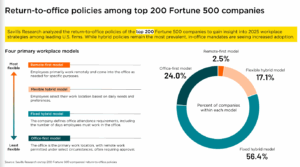Capital Ideas: Dissecting Distress
At the CREFC annual conference yesterday, much of the commentary by lenders, servicers and investors centered around distressed loans. The situation is most severe in the office market where values have been disrupted by rising interest rates, increased operating costs, and concerns around utilization.
So, when I sat down with Lonnie Henderson, chief product officer for Trepp Inc., I asked him to break down the distress. Is the situation as bad as it sounds?
Trepp’s May 2024 Delinquency Report was actually “favorable,” Henderson said, with CMBS delinquencies inching down to 4.97 percent. Even office, which had peaked at 7.38 percent in April, was 6.94 percent in May thanks to the resolution of some sizeable loans.
But Henderson does not expect the positive trend for office to continue, and it may “peak” at 10 percent sometime this year.
“Broad brush, the market is performing better than the headlines would suggest, but there is a lot of distress that just hasn’t made it through the system yet,” he said.
The CMBS market has about $30 billion of office loans maturing throughout the remainder of 2024, Henderson said, and a lot of those loans have very low debt yields in place, very low DSCRs and low occupancies relative to stabilized norms.
“None of those things bode well for refinancing, bode well for sale,” Henderson said. “So, what you are seeing is just this slow drawdown of people having to make decisions around the office sector.”
There is talk from institutional-grade owners about handing the keys back to lenders, and some have followed through on that, and, a number of properties have sold significantly below their previous sales prices, Still, however, Henderson would not label the office situation “catastrophic” for CRE. “During COVID, just as an example, I think lodging hit 25 percent delinquency,” Henderson noted. “Now, here, quickly, we are nowhere near that with office.”
On the other hand, office’s financing issues, he said, will not be resolved by a reduction in interest rates, which may or may not happen this year. It may help “psychologically” and get some buyers and sellers off the fence, but the sector would still be refinancing at higher rates and it would still be addled by changing fundamentals—namely the shift to remote and hybrid work, which is beyond the control of borrowers and lenders.
Changing fundamentals can be blamed for a number of seemingly solid single-asset, single-borrower CMBS office deals going south this year. That unexpected turn of events came up frequently during the CREFC panel discussions.
“Without some sort of large-scale, massive change in the way people’s behaviors have been adapted after COVID,” Henderson said. “there’s nothing an owner of a building can do to bring people back to the office.”
What would really help the entire sector, he said, is if the Federal government decided to make employees return to the office. “That by itself is enough to start making office more viable,” he said.
Elsewhere in real estate
Troubled loans are not exclusive to office. Multifamily has been very stable, Henderson said, but there are some signs of “cracks.” Rent growth “abated” in the latter part of 204 and has not yet recovered. Meanwhile, expenses have grown significantly. The delinquency rate in May was 1.7 percent, up from 1.33 percent in April.
“Combine that with a higher cost of capital and refinancing and higher interest rates loans,” he said, “There’s definitely some challenges for the multifamily sector.
There were also a lot of multifamily deliveries in 2023 and 2024, but the “silver lining” is there will be significantly fewer coming online between 2025 and 2028.
Overall, Henderson said, he would be bullish on multifamily, particularly for borrowers that don’t have short-term floating-rate debt expiring this year or next.
Industrial, with a delinquency rate of .5 percent in May, currently seems like the preferred asset class, Henderson said. But the rental rates, which have “tripled and quadrupled” in some markets, may not be sustainable. Some markets, he said, have pulled back on rents and demand is softening.
“So, you’re not seeing developers come in and build a million square foot spec spaces anymore,” he said. “But there is still an insatiable demand for the that 250,000 square foot and less that can be divided.”
Retail, “surprisingly,” would be the second healthiest in terms of delinquencies, Henderson said. Retailers and retail property owners that have survived COVID have proven their business models, and he has seen some retail strip centers—like those that have TJ Maxx and Ross Dress for Less as anchors—sell for really aggressive pricing and low cap rates.
The delinquency rate for retail, though, was 5.94 percent in May and April. But that was still better than hotel, which was 6.22 percent delinquent in May, up from 5.97 percent in April.
“Retail has been a really great story in the midst of some bad stories,” Henderson said.
It sounds like those stories, at least in the office sector, are going to get worse before they get better.
The post Capital Ideas: Dissecting Distress appeared first on Commercial Property Executive.






